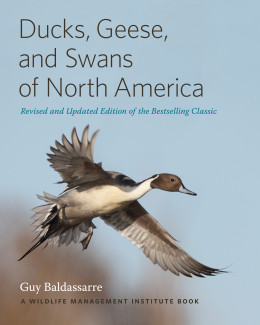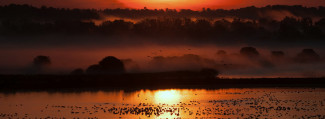
Johns Hopkins UniversityEst. 1876
America’s First Research University
A Marsh is Born
By Vincent J. Burke, executive editor
A hawk went aloft, stealing everyone’s attention. It was a familiar scene for the speaker, a wildlife manager whose back was turned to the soaring bird. You could see the slight smile form on his face as he recognized the failed attempts of the rows of seated listeners to conceal their interest. “What’s the bird behind me?” he asked as laughter broke out. It was a solemn day in the middle of one of the most rural parts of upper New York State, and the humor was fresh on the heels of suppressed tears.


When Guy’s wife, Eileen, spoke you could sense a marriage built on collaboration. When speakers told of the way in which large and small donations flowed in to rebuild the marsh, one was struck by the diversity of sources. Guy’s book itself was a collaboration that involved the Wildlife Management Institute, photographers, students, and scores of waterfowl groups and experts. After his death, one of these waterfowl experts had to guide Guy’s book through copyediting. Sue Sheaffer dedicated herself to those thousands of hours of doing what Guy would have insisted upon: double-checking everything.
Everything—the marsh, the book, the students, the friendships, the bonds—all somehow centered on Guy’s infectious enthusiasm for birds. It wasn’t just the enjoyment birds bring to us, or satisfying our curiosity about them; it was Guy’s recognition that birds need champions in this modern world. Out at Guy’s Marsh, looking around at the dedicated heirs of Dr. Baldassarre’s legacy, I got the sense the world was going to be a better place for birds because Guy spent decades teaching us, by example, how to collaborate on their behalf.
Editor’s note: To read Dr. Mike Schummer's remembrance of Guy Baldassarre—the man, the book, and the marsh, click here.

Executive Editor Vincent J. Burke, PhD, acquires books in science and mathematics for the JHU Press; follow him on Twitter at @VBurke2.


